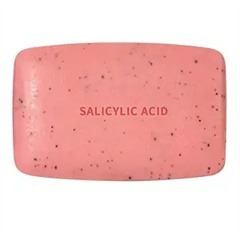Identifying irritants in soap and understanding their potential to cause allergies is crucial for creating products that are safe for a wide range of consumers. Allergic reactions can range from mild skin irritation to more severe symptoms, so it’s important to take steps to minimize the risk. Here’s how you can identify irritants in soap and address potential allergens:
- Ingredient Analysis: Carefully review the ingredients used in your soap formulation. Some common irritants and allergens found in soaps include fragrances, preservatives (like parabens), certain dyes, and harsh detergents (like sulfates). Consider using milder alternatives to these ingredients.
- Patch Testing: Conduct patch tests with the soap formulation on a small group of individuals before mass production. This involves applying a small amount of the soap to a small area of the skin and monitoring for any adverse reactions over a period of time.
- Consult Allergists and Dermatologists: Seek advice from allergists and dermatologists, as they can provide valuable insights into common allergens and irritants. They can also recommend appropriate testing methods to ensure the safety of your soap.
- Fragrance-Free and Hypoallergenic Options: Fragrances are a common cause of skin allergies. Consider offering fragrance-free or hypoallergenic soap options to cater to individuals with sensitive skin.
- Label Transparency: Clearly list all ingredients on the product packaging. This helps consumers with known allergies avoid products that may trigger their sensitivities.
- Patchouli Testing: If you’re introducing new ingredients or making changes to your soap formulation, conduct patch testing with the new ingredients to identify any potential allergens or irritants.
- Testing Services: There are various testing services available that can assess the allergenic potential of products. These tests can help identify substances that have a higher likelihood of causing allergic reactions.
- User Feedback: Encourage consumers to provide feedback on their experience with your soap. If you receive reports of allergic reactions, take them seriously and investigate the issue promptly.
- Natural Ingredients: Consider using natural and organic ingredients in your soap formulation. These ingredients are often less likely to cause allergies compared to synthetic or heavily processed substances.
- Product Iteration: Be prepared to make adjustments to your soap formulation based on the feedback and testing results. Continuous improvement is essential for ensuring the safety and quality of your product.
Remember that everyone’s skin is unique, and what causes an allergic reaction in one person may not affect another. It’s impossible to create a soap that will be completely allergy-proof for everyone, but by following best practices and staying informed about common allergens and irritants, you can create a soap that is less likely to cause adverse reactions in the majority of users.








